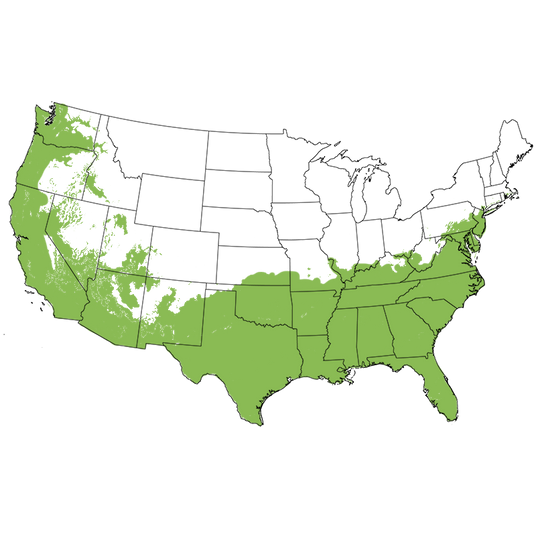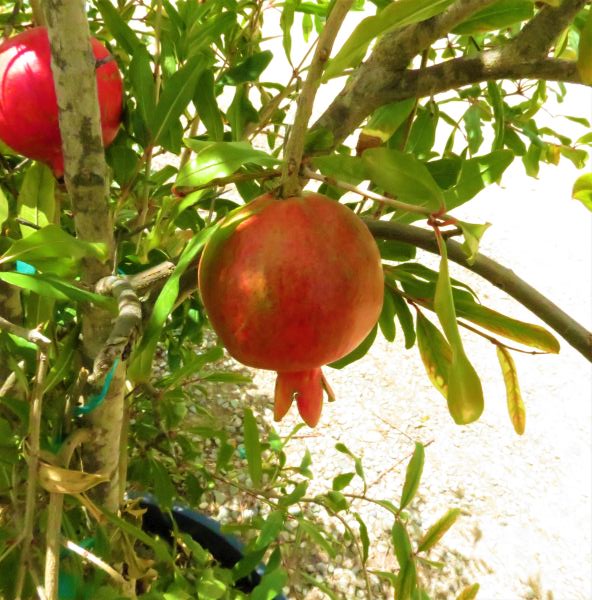Wonderful Pomegranate
Punica granatum 'Wonderful'
Plant Sentry™
Plant Sentry™

Plant Sentry™ Protected
Your order is protected by our compliance system that:
- Prevents restricted plants from shipping to your state
- Ensures plants meet your state's agricultural requirements
- Protects gardens from invasive pests and diseases
Delivery and Shipping
Delivery and Shipping
Delivery and Shipping
Fast, Safe Plant Delivery
Ships in 3-4 business days • Tracking provided • Weather protected
| Under $50 | $9.99 |
| $50 - $99.99 | $14.99 |
| $100 - $149.99 | $16.99 |
| $150 - $198.99 | $24.99 |
| $199+ | FREE |
✓ Zone-specific timing • ✓ Professional packaging • ✓ Health guarantee
Understanding Plant Options
Nature Hills offers plants in two main formats:
- Container Plants: Grown in pots with soil, sized by container volume and plant age
- Bare Root Plants: Dormant plants without soil, sized by height measurements
Container Plant Sizes
Container sizes indicate plant age and growing capacity rather than liquid volume equivalents. Our containers follow industry-standard nursery "trade gallon" specifications, which differ from standard liquid gallon measurements.
Young Plants (6 months to 18 months old)
| Container Size | Actual Volume | Metric Equivalent |
|---|---|---|
| 2" x 2" x 3" | 0.18 - 0.21 dry quarts | 0.20 - 0.23 dry liters |
| 4" Container | 0.31 - 0.87 dry quarts | 0.35 - 0.96 dry liters |
| 4.5" Container | 0.65 dry quarts | 0.72 dry liters |
| 6" Container | 1.4 dry quarts | 1.59 dry liters |
| 1 Quart | 1 dry quart | 1.1 dry liters |
| 5.5" Container | 1.89 dry quarts | 2.08 dry liters |
Established Plants (18 months to 2.5 years old)
| Container Size | Actual Volume | Metric Equivalent |
|---|---|---|
| 2 Quart | 2 dry quarts | 2.2 dry liters |
| #1 Container | 2.26 - 3.73 dry quarts | 2.49 - 4.11 dry liters |
| 5" x 5" x 12" | 3.5 - 4.3 dry quarts | 3.85 - 4.74 dry liters |
Mature Plants (2-4 years old)
| Container Size | Actual Volume | Metric Equivalent |
|---|---|---|
| #2 Container | 1.19 - 1.76 dry gallons | 5.24 - 7.75 dry liters |
| #3 Container | 2.15 - 2.76 dry gallons | 8.14 - 12.16 dry liters |
Large Plants (3-5 years old)
| Container Size | Actual Volume | Metric Equivalent |
|---|---|---|
| #5 Container | 2.92 - 4.62 dry gallons | 12.86 - 20.35 dry liters |
| #6 Container | 5.25 - 6.01 dry gallons | 23.12 - 26.42 dry liters |
| #7 Container | 5.98 - 6.53 dry gallons | 26.34 - 28.76 dry liters |
Bare Root Plants
Bare root plants are sold by height from the root system to the top of the plant. Plants may exceed minimum height requirements.
Common Sizes:
- Trees: 1 foot, 2 feet, 3 feet, 4 feet, 5 feet, 6 feet
- Shrubs & Perennials: 1 foot, 18 inches, 2 feet
Important Notes
Container Volume Specifications
- Trade Gallon Standard: Our containers follow industry-standard "trade gallon" specifications established by the American National Standards Institute (ANSI Z60.1) for nursery stock
- Volume Variations: Actual soil volume may vary due to plant root systems and growing medium settlement
- Age Indicators: Container size primarily indicates plant age and maturity rather than liquid volume equivalents
Growing Conditions
- Plant size can vary based on variety and growing conditions
- Container size helps indicate plant maturity and establishment level
- Larger containers generally mean more established root systems and faster landscape establishment
Seasonal Availability
- Bare root plants are available seasonally when dormant
- Container plants are available throughout the growing season
- Specific varieties may have limited availability in certain sizes
Questions?
For questions about specific plant sizes or availability, please contact our plant experts who can help you choose the right size for your landscape needs.

Plant Sentry™ Protected
Your order is protected by our compliance system that:
- Prevents restricted plants from shipping to your state
- Ensures plants meet your state's agricultural requirements
- Protects gardens from invasive pests and diseases
Plant Profile & Growing Essentials
Cold hardy, Self-pollinating, Flowering, Edible, Heat Tolerant, Drought resistant, Ornamental Berries/Fruit, and Container Friendly
Specifications
Specifications
-
Botanical Name
-
Height
-
Width
-
Growing Zones
-
Sunlight
-
Growth RateModerate
-
Flower Color
-
Leaf Color
-
Pollinator FriendlyYes
-
Pollinator Required
-
Harvest Time
-
Bloom PeriodLate Spring
Planting & Care Instructions
Planting & Care Instructions
The Wonderful Pomegranate (Punica granatum 'Wonderful') is a hardy ornamental with a fabulous fall harvest. The flowers of the Wonderful are the brightest red known, their rare blending of oranges and reds is reminiscent of a summer sunset!
Spring and fall are special times for your Pomegranate. In the spring the leaves emerge with an uncommon splash of bronze. They then fill out the tree's dense rounded shape, lending it an appealing silhouette that would enhance almost any yard. An abundance of dainty brilliant flowers follows close behind and attracts a host of pollinators.
Hardier than many spring blooms and prolonging your enjoyment into the summer months, the flowers even encourage hummingbirds! Fall brings even more appeal as the yellow leaves and the 4-inch, round red fruit proclaim a successful conclusion to the season. The crimson fruit around each seed has a unique tart-sweet flavor and is usually eaten whole or made into juice or syrup.
Planting and Application:
Pomegranates are most often grown as a shrub, but if you prefer a tree they're easy enough to prune into a desired shape or to fit containers. One would look lovely in your landscape bed, or plant several as a shrub border or hedgerow. Accent entertainment areas, or set one as a crown jewel in your front landscaping.
Many people grow the Pomegranate not for the fruit, but simply for its ornamental appeal. You'll love how the glossy dark green color of the oval leaves catches the midday sun, plus the blossoms that appear. Your neighbors won’t mind accepting some of your harvest either!
- Outstanding Healthy Bright Red Fruit
- Delicious Fresh Eating & Juicing Variety
- Self-Fertile
- Brilliant Red-Orange Flowers
- Smaller Shrub or Tree!
#ProPlantTips for Care:
Pomegranate trees are best planted in the sunniest, warmest part of your yard or orchard for the most fruit, but also tolerate part shade. Provide well-drained soil that’s enriched and mulch their root zone well.
- Full Sun & Part Shade
- Enriched Well-Drained Soil
- Mulch & Provide Consistent Moisture
- Prune Late Winter
- Check Out Fruit Tree Success Tips
Cultivated since ancient times, the fruit is increasingly popular for its health benefits and is chocked full of vitamins, antioxidants and other health advantages! Pomegranate has twice the antioxidants found in grape juice, green tea, or red wine, and reduces the chances to develop hardened arteries. So order your own truly Wonderful Pomegranate today from NatureHills.com!
Delicious, Healthy Pomegranate
Believed to have come from areas of the world that weren't big on record keeping, the Pomegranate began being cultivated in the Neolithic era between 10,200 BC to 2000 BC. During this long history, the fruit has become a part of many cultures in the world, each with their own idea of what the perfect pomegranate fruit should be.
Through the centuries, different collections of pomegranates have emerged in developing cultures of Central Asia. Unique Pomegranate varieties to each region began to become the taste of those areas.
Regions like India, the Himalaya's, China, the Middle East and Turkmenistan each favored different fruit and flavor qualities. Some liked high sugar with low or no acid, while another region may have preferred fruit with an acid/ sugar balance or sour and sweet mix. Still, others were selected for physiological traits such as less cracking and softer seeds.
Introduced as early as the mid 1700's by Spanish missionaries, most of the first Pomegranates were confined to the California missions.
The Wonderful Pomegranate is one of the first varieties to become popular in America and was reported to be discovered in Florida, but how is not clear. Credit to its introduction is given to a location in Porterville, California in about 1896. It should be mentioned that a similar variety by the same name is grown in Israel, but more recent comparisons suggest they are not the same fruit.
Though popular throughout the world, the Pomegranate in the United States was slow to gain appeal. Research was done at Harvard in 1991 and continued at Tufts University; along with University research studies in Europe to test the health benefits of small fruits. All tests concluded there was tremendous health benefits from the small berries and cane berries. These studies included the Pomegranate due to the fact that a Pomegranate is an inverted fruit with each one of the berries inside an individual fruit.
The results showed that Pomegranates were among the most beneficial of all the fruits tested. As the results of the studies began to become public, the popularity of the Pomegranate exploded thanks to the health-conscious consumer.
The Wonderful Pomegranate's demand grew overnight because of its good flavor, bright red color, large size and somewhat resistant to cracking. Only a few other choices were available to the home gardener or the commercial grower in the mid 1990's. Wonderful' s became the lead variety for the health movement with a new appreciation for this commonly overlooked fruit type.
Today, Wonderful Pomegranate remains the first choice for juicing and fresh eating in both the commercial and the home garden market.











